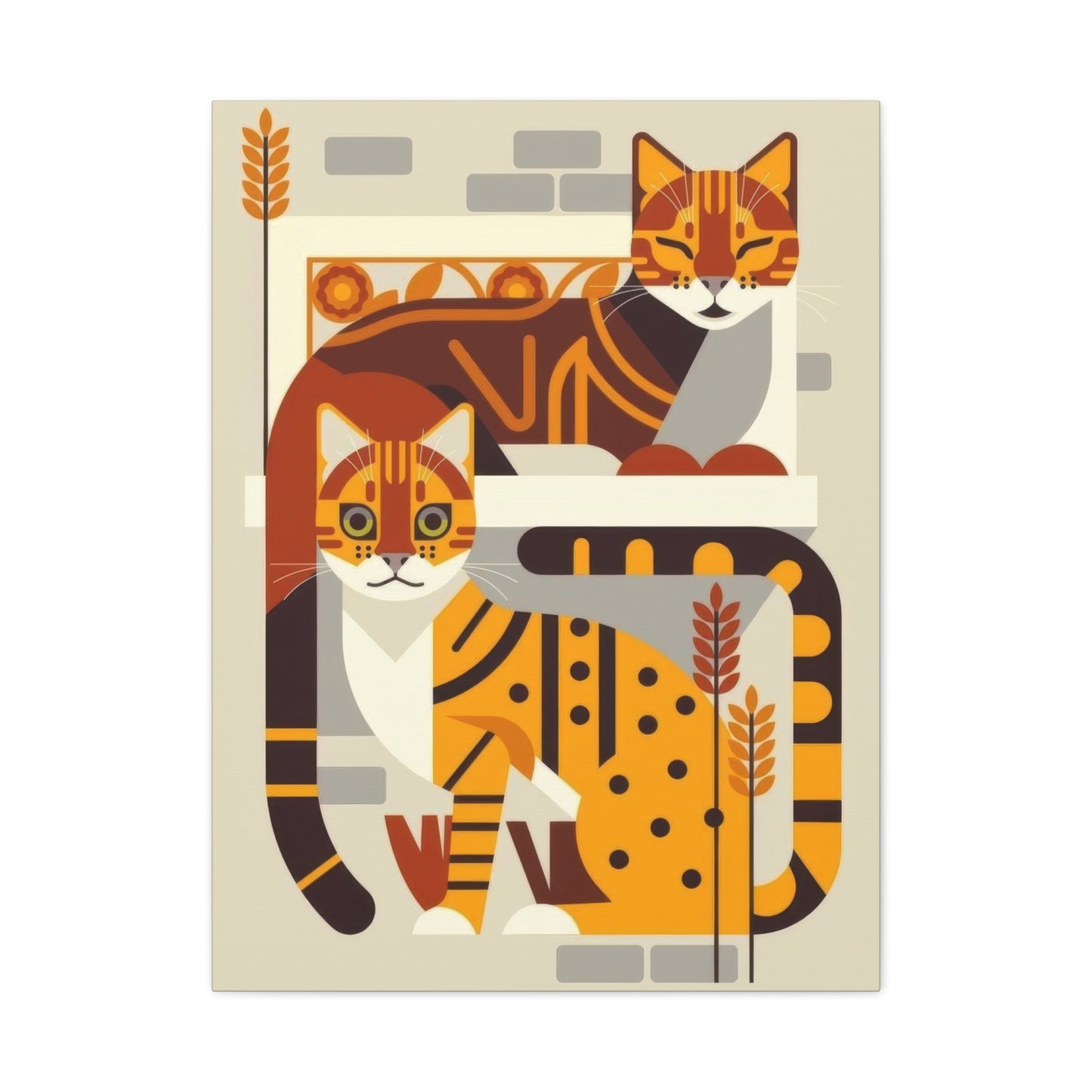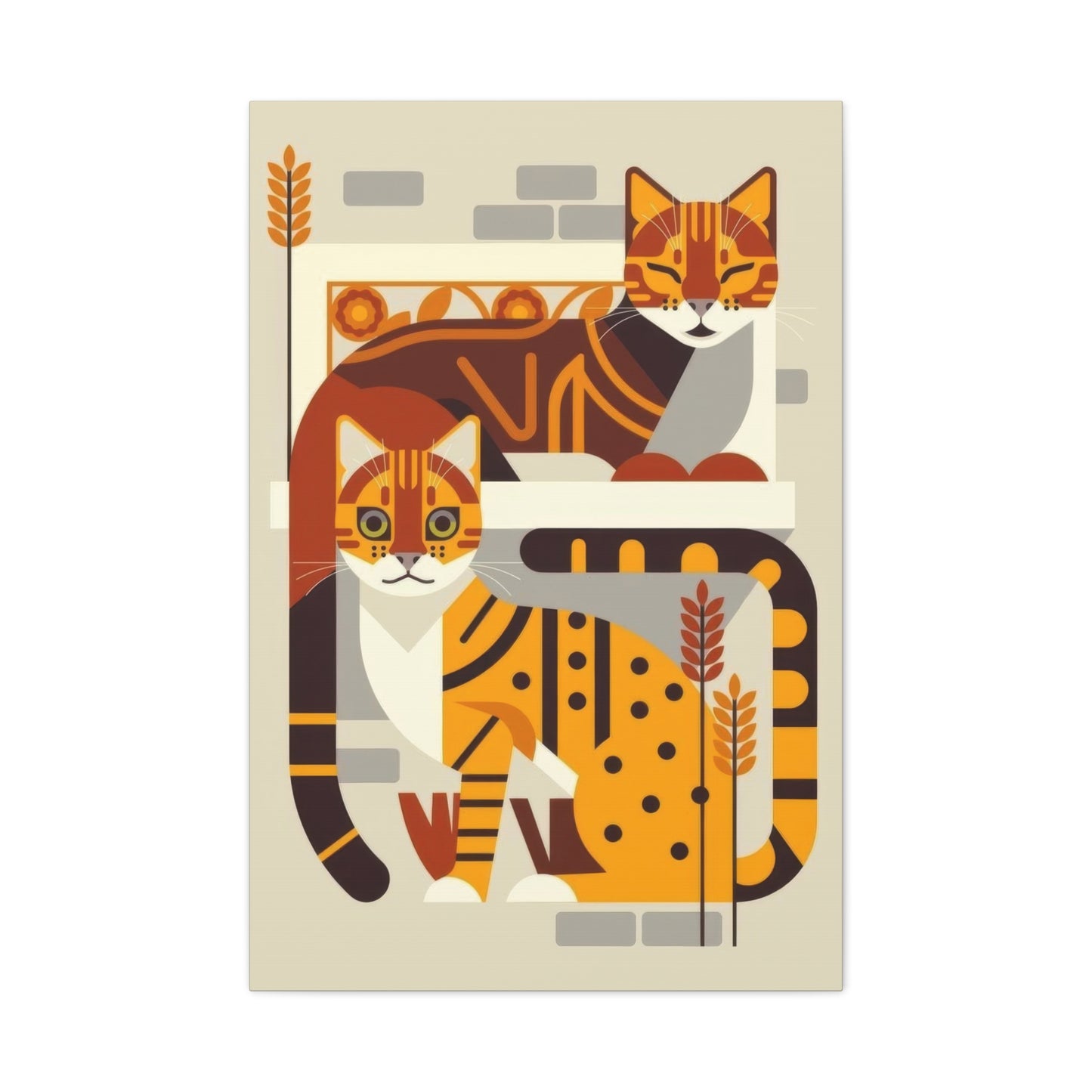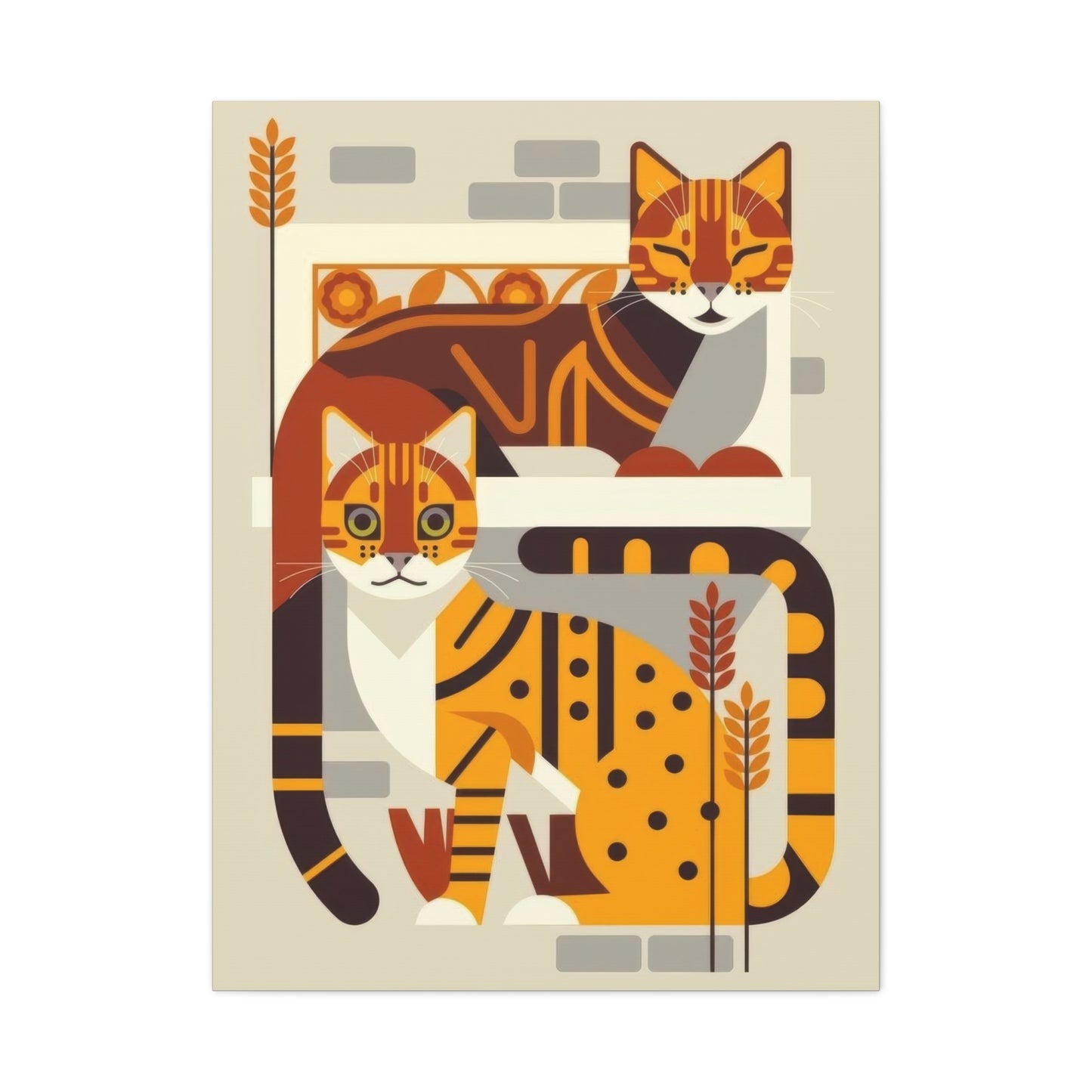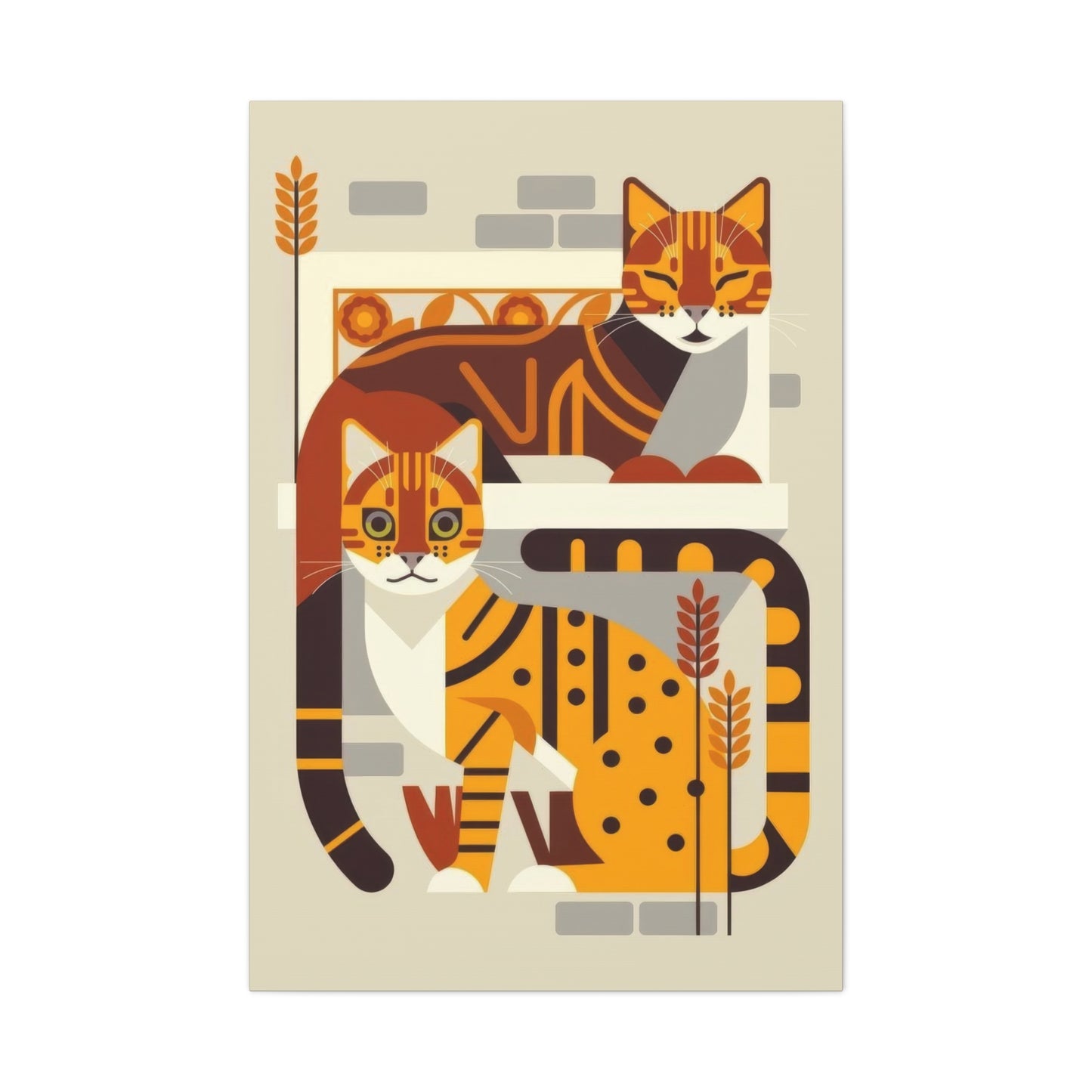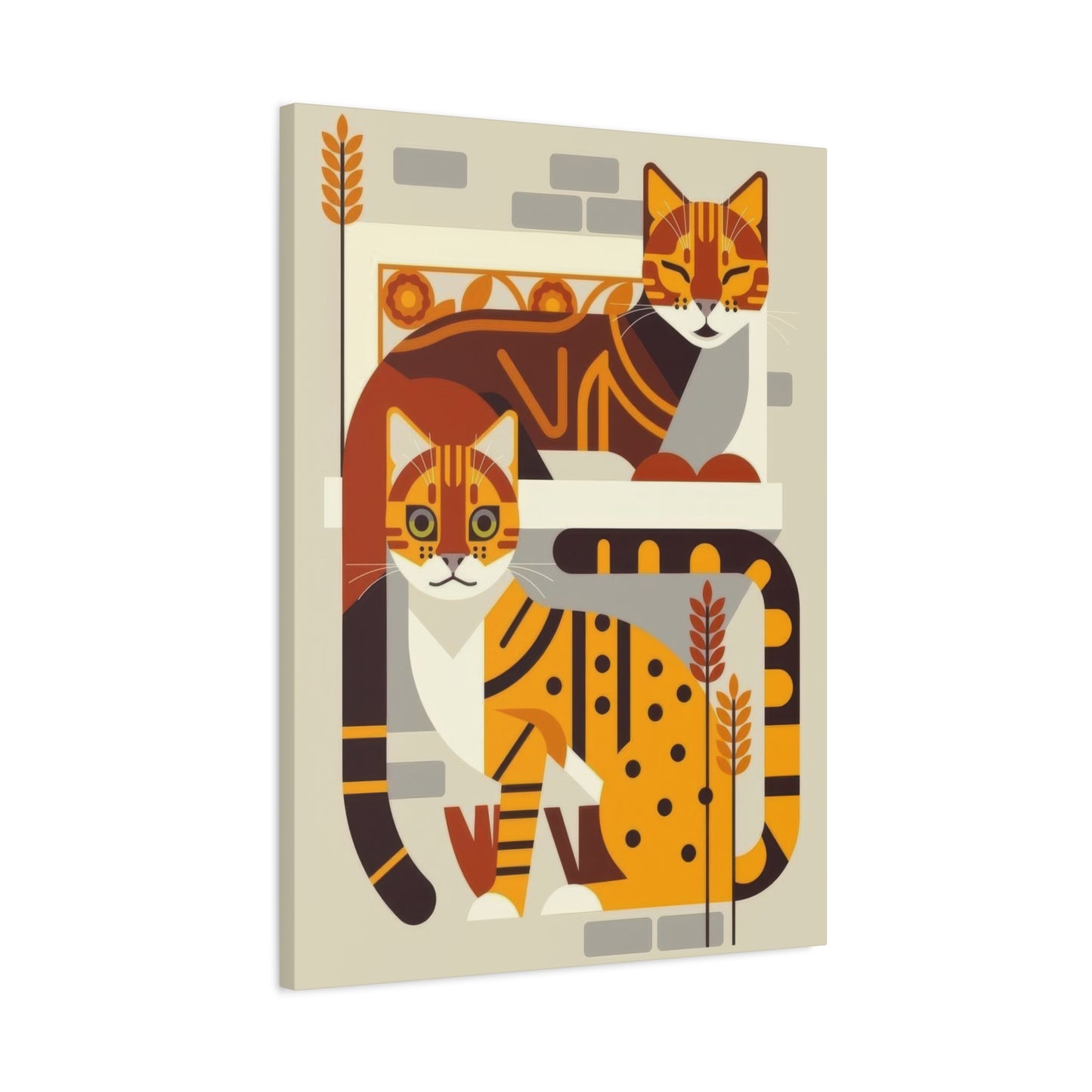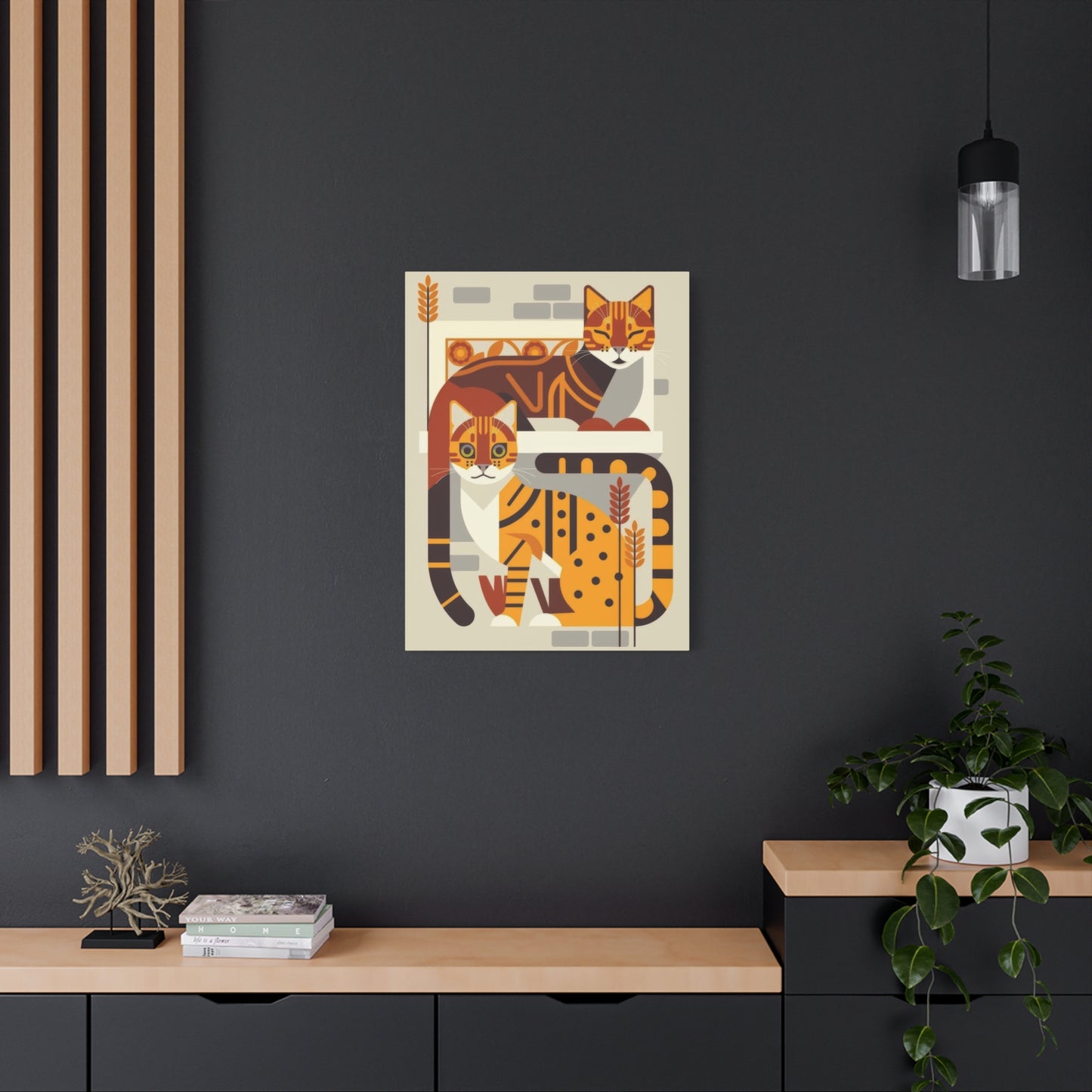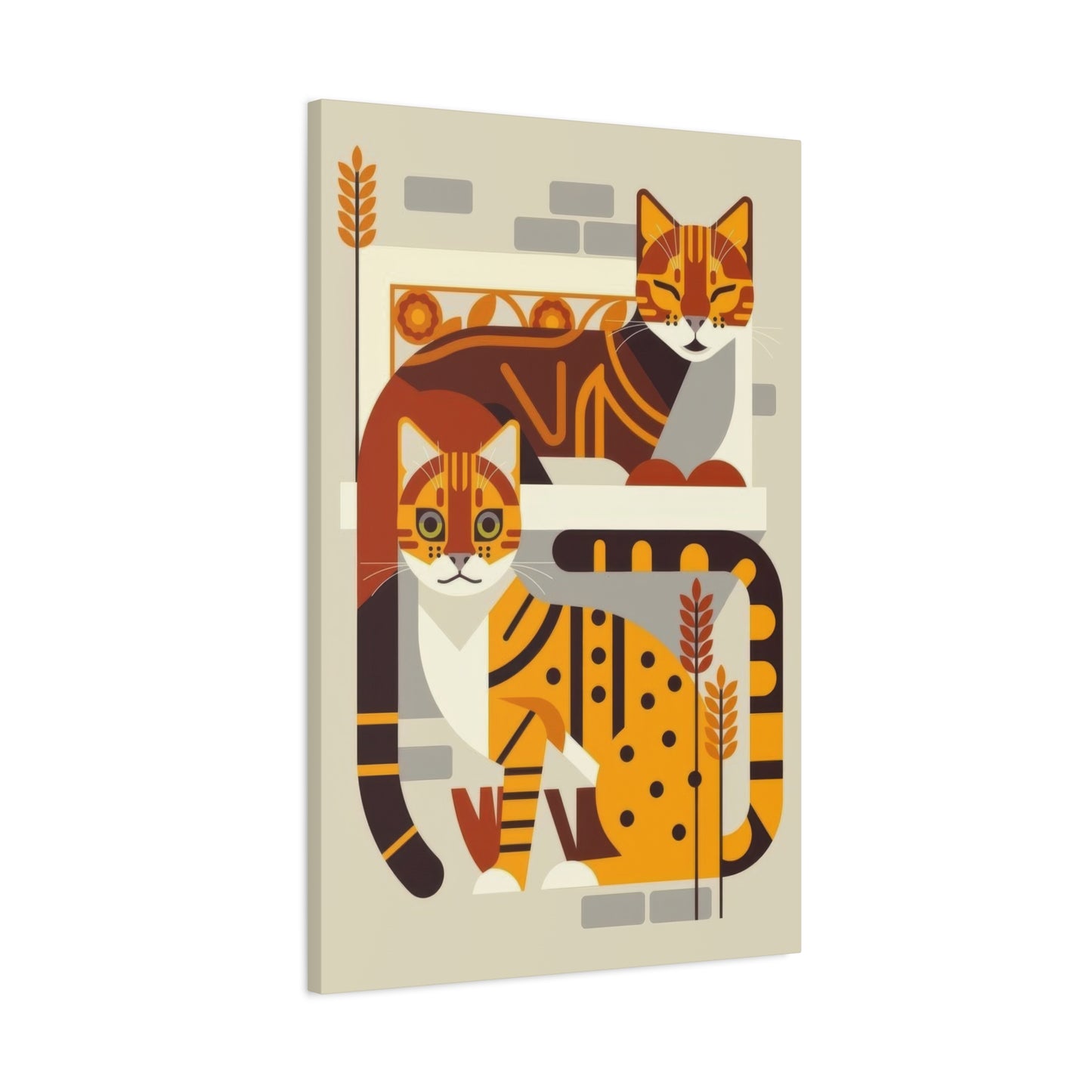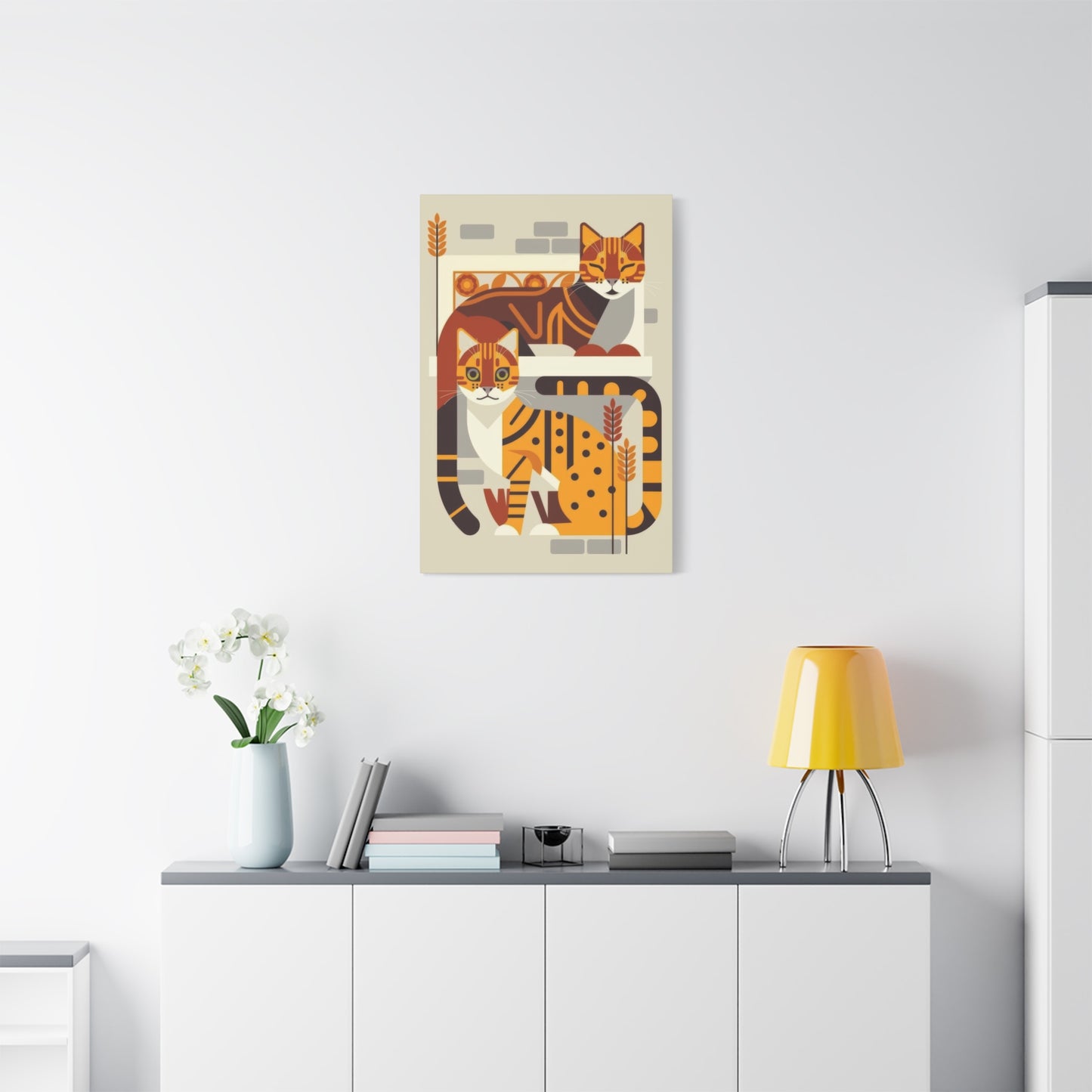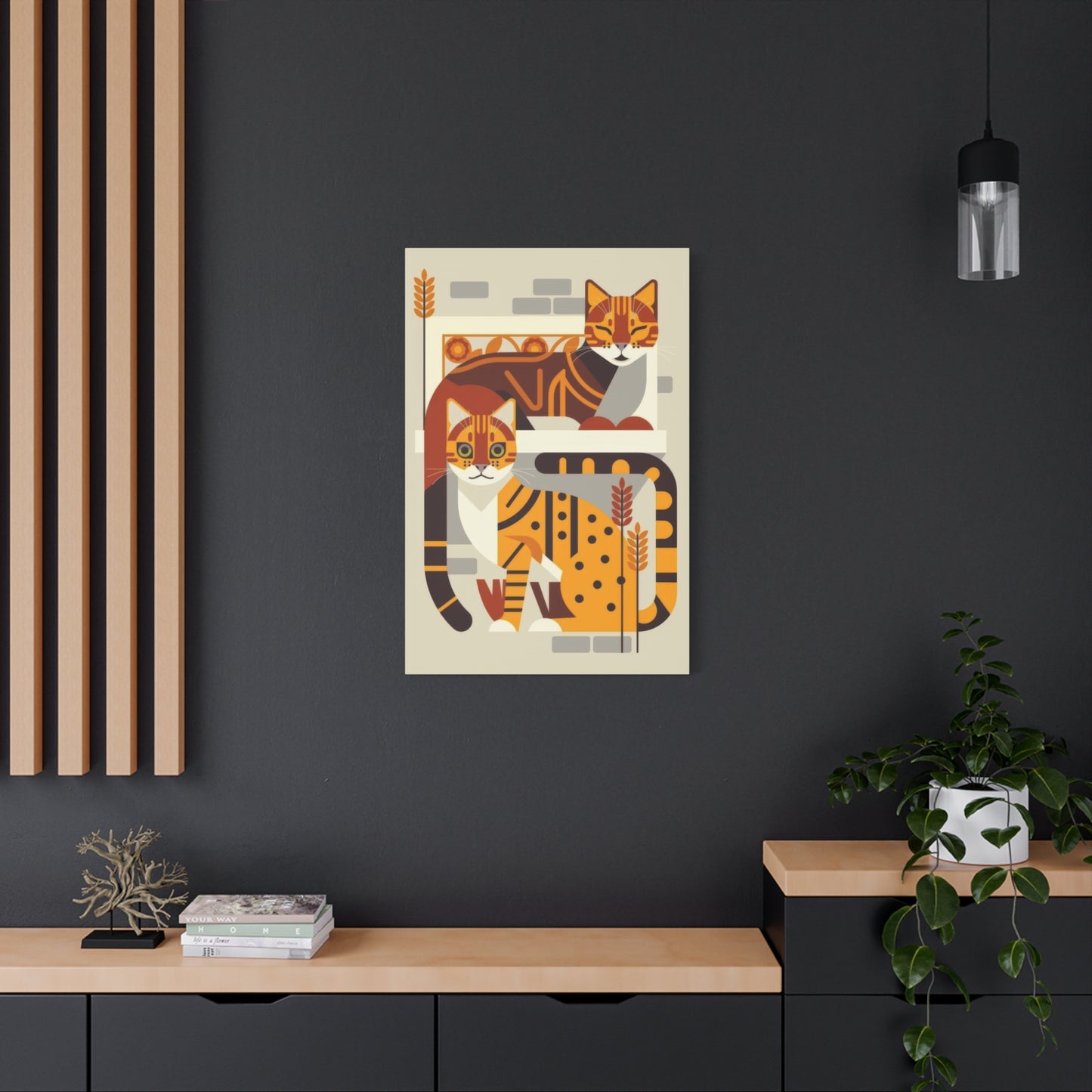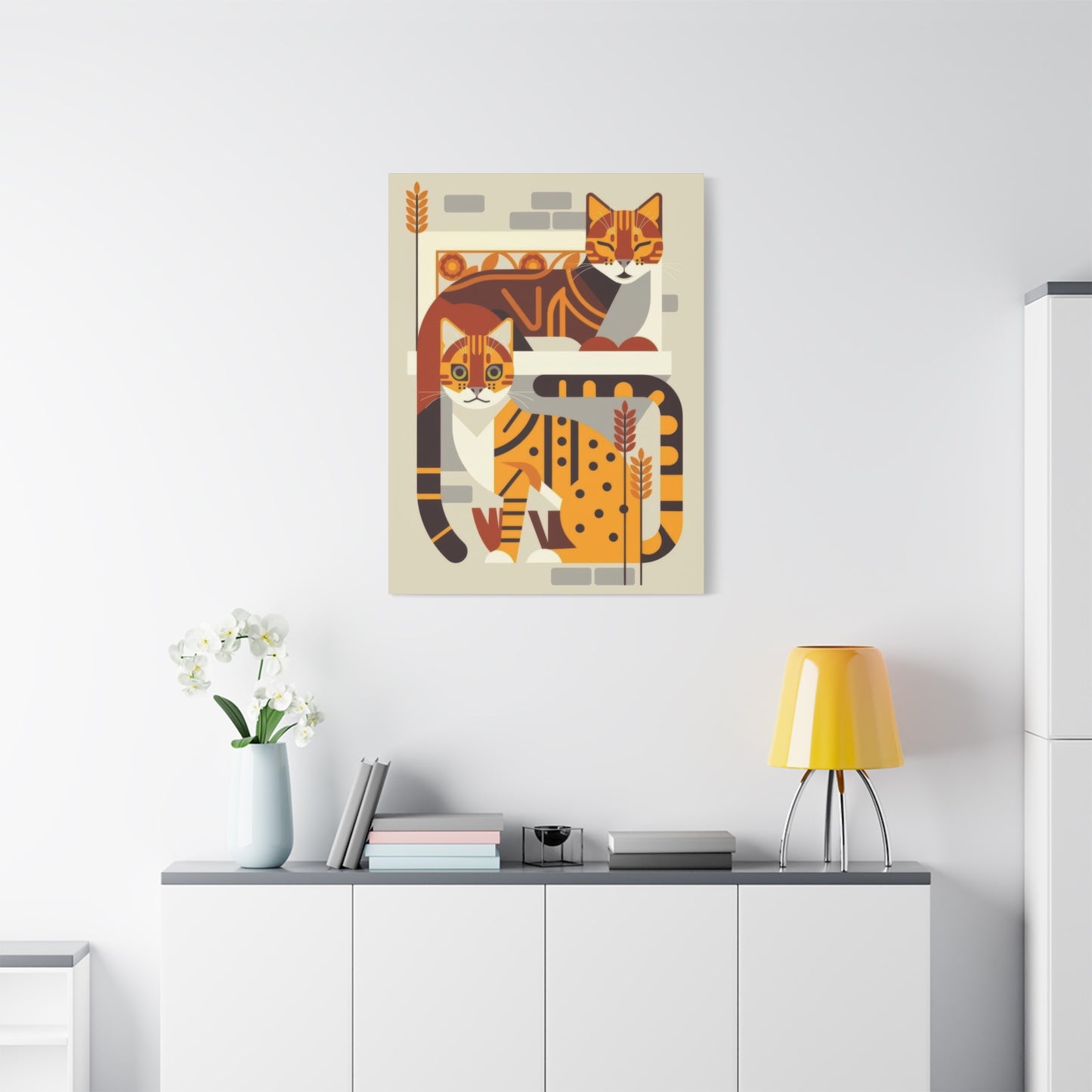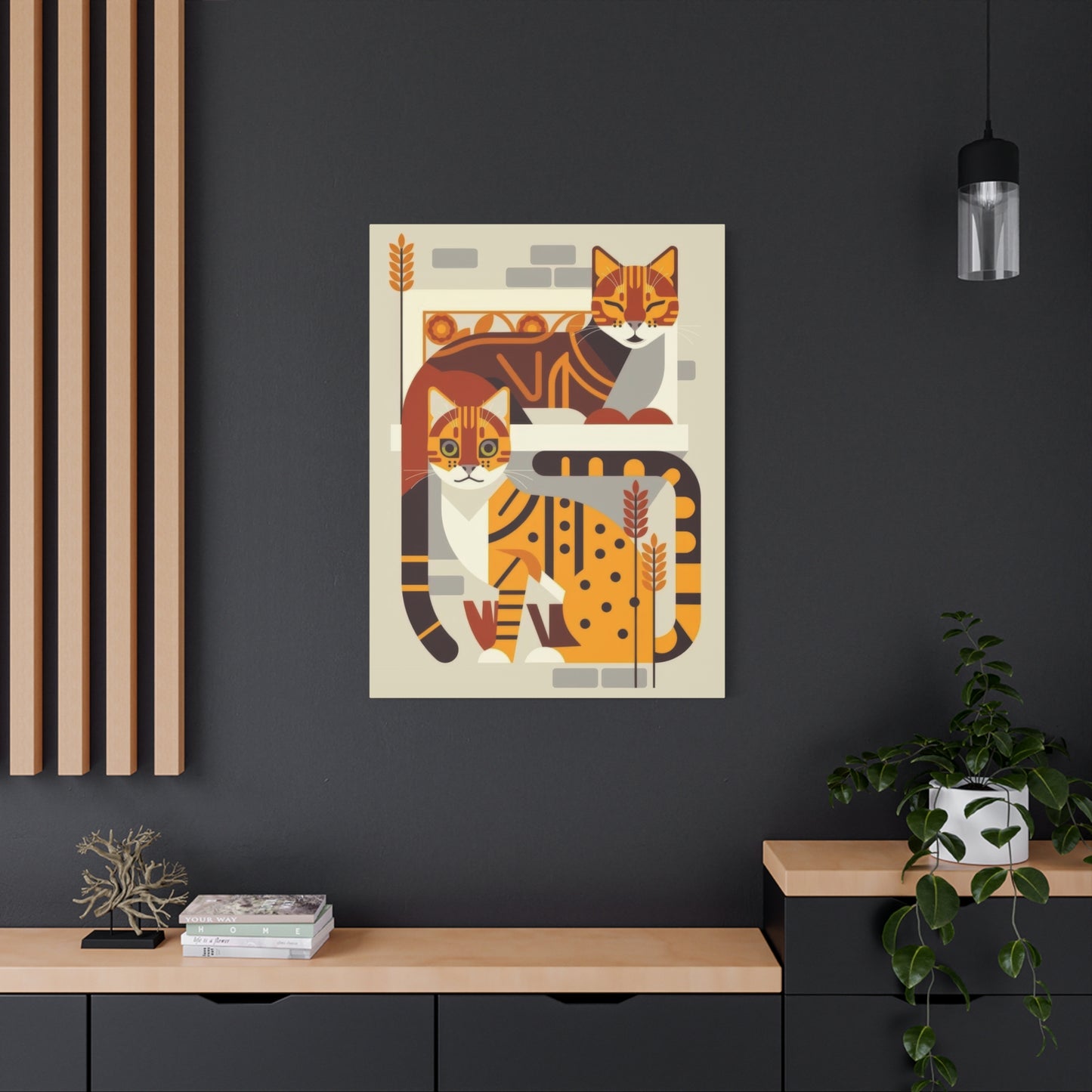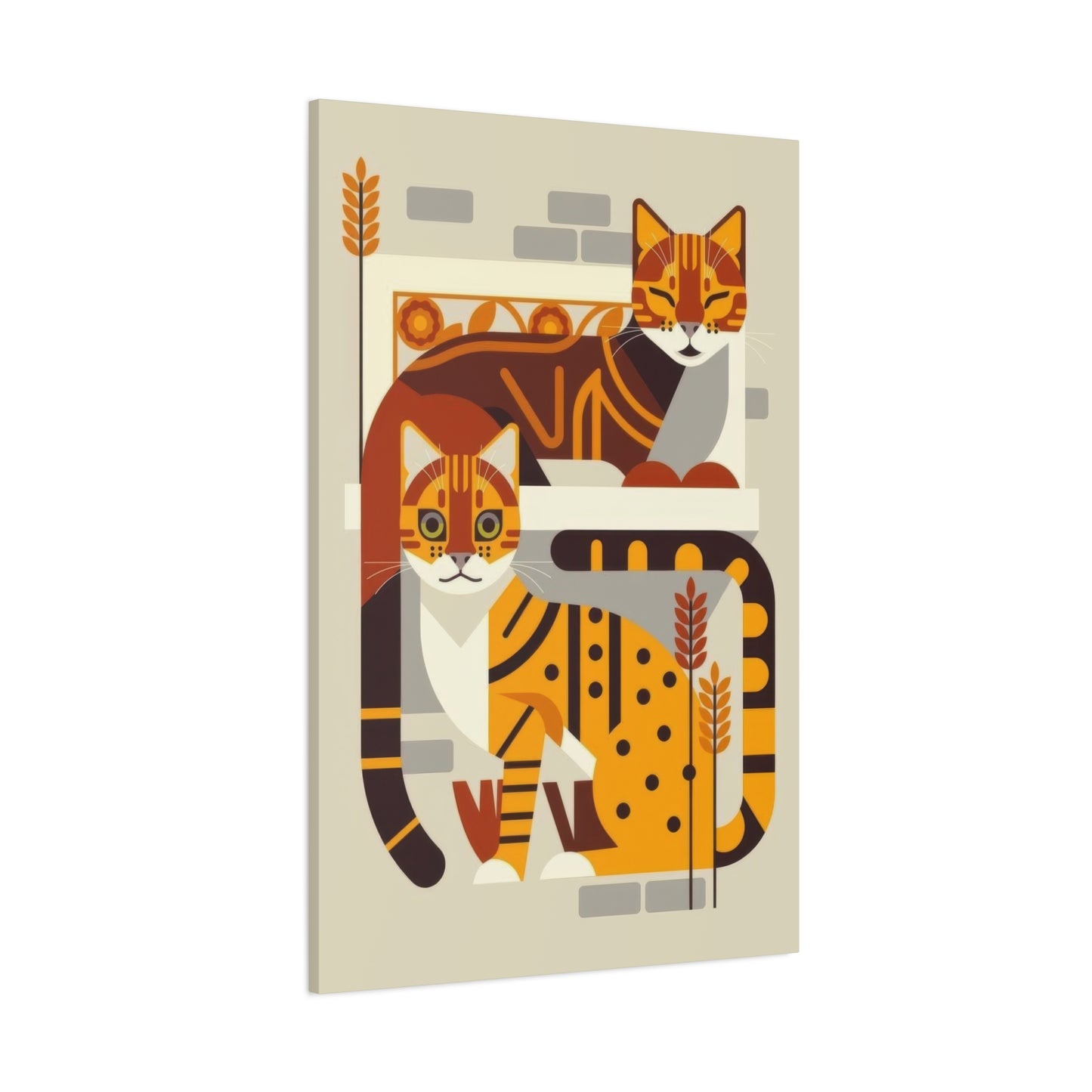Modern Meets Adorable: The Rise of Cats Deco Wall Art in Home Décor
Creating a warm and inviting atmosphere in your home requires careful consideration of decorative elements that reflect your personality and interests. For those who share their lives with cats or simply admire these graceful creatures, incorporating feline-themed canvas wall prints offers an exceptional way to enhance interior spaces. These artistic pieces combine aesthetic appeal with personal expression, making them ideal additions to modern homes seeking distinctive character.
Canvas wall prints featuring cats have evolved significantly over recent years, moving beyond simple photographs to encompass various artistic styles and design approaches. From minimalist interpretations to vibrant abstract compositions, these decorative pieces cater to diverse tastes and interior design preferences. The versatility of canvas as a medium allows for stunning reproductions that capture intricate details while maintaining durability and visual impact across different lighting conditions and room settings.
The popularity of feline-themed wall decorations continues to grow as homeowners seek meaningful ways to personalize their spaces. Unlike generic artwork, these specialized pieces create immediate emotional connections while serving as conversation starters for guests. Whether displayed in living rooms, bedrooms, home offices, or dedicated pet spaces, canvas prints celebrating cats bring warmth and personality to any environment. The combination of artistic merit and subject matter creates decorative solutions that resonate with both casual admirers and devoted enthusiasts.
Understanding the various styles, placement strategies, and selection criteria for feline canvas prints enables homeowners to make informed decisions that complement existing décor while expressing individual preferences. This comprehensive exploration examines multiple approaches to incorporating these artistic pieces into residential spaces, offering practical guidance for creating cohesive and visually appealing environments that celebrate the timeless charm of cats.
Classic Feline Imagery on Canvas for Traditional Interiors
Traditional interior spaces benefit tremendously from canvas wall prints featuring classic feline imagery that honors timeless artistic conventions. These pieces typically showcase cats in realistic poses, capturing their natural elegance and distinctive characteristics through detailed renderings. The approach emphasizes anatomical accuracy and lifelike representations, making them particularly suitable for homes with conventional décor schemes that value refinement and sophistication.
Historical artistic movements have long celebrated cats as subjects worthy of careful study and representation. Renaissance painters included these animals in domestic scenes, while Victorian artists elevated them to symbols of home comfort and companionship. Contemporary canvas prints drawing inspiration from these traditions maintain reverence for classical techniques while utilizing modern printing technology to achieve exceptional clarity and color fidelity. The result combines historical aesthetic sensibilities with contemporary production methods.
Selecting classic feline canvas prints requires attention to compositional elements that enhance traditional spaces. Portraits featuring individual cats in dignified poses work beautifully as focal points above mantels or in formal dining areas. Multi-cat compositions depicting domestic scenes complement traditional living rooms where family gatherings occur. The color palettes in these pieces typically feature warm earth tones, rich burgundies, and deep greens that harmonize with conventional furniture and architectural details.
Frame selection plays a crucial role in presenting classic feline imagery effectively. Ornate frames with gold or bronze finishes enhance the traditional aesthetic, creating cohesion with other decorative elements commonly found in conventional interiors. Wider mat borders provide visual breathing room, allowing the artwork to command attention without overwhelming adjacent furnishings. The combination of quality canvas reproduction, appropriate framing, and strategic placement transforms these prints into sophisticated design elements.
Lighting considerations significantly impact how classic feline canvas prints appear within traditional spaces. Picture lights mounted above individual pieces create focused illumination that highlights artistic details while adding ambient warmth to surrounding areas. Natural light from windows should be managed carefully to prevent fading, with UV-protective glazing options available for particularly valuable prints. Proper lighting transforms these decorative pieces into dynamic elements that change subtly throughout the day.
Grouping multiple classic feline prints creates gallery walls that become defining features of traditional interiors. Arranging pieces of varying sizes in symmetrical patterns establishes visual order consistent with conventional design principles. Maintaining consistent frame styles across the collection ensures cohesion, while subtle variations in subject matter prevent monotony. This approach allows homeowners to display extensive collections while maintaining the refined atmosphere characteristic of traditional spaces.
The emotional resonance of classic feline imagery extends beyond mere decoration, connecting viewers to centuries of artistic tradition that celebrated these animals as worthy subjects. These prints serve as reminders of the enduring relationship between humans and cats, expressed through artistic language that transcends temporal boundaries. For homeowners who appreciate historical depth in their decorative choices, classic canvas prints offer meaningful connections to artistic heritage while celebrating contemporary appreciation for these beloved animals.
Contemporary Minimalist Cat Canvas Designs for Modern Spaces
Modern interior design philosophy emphasizing clean lines and uncluttered spaces finds perfect expression through minimalist cat canvas prints. These pieces distill feline forms to essential elements, removing extraneous details to focus on fundamental shapes and silhouettes. The approach creates powerful visual statements through simplicity, making them ideal for contemporary homes that prioritize clarity and spatial harmony over ornate decoration.
Minimalist feline artwork typically employs limited color palettes, often restricting compositions to monochromatic schemes or carefully selected accent colors. Black silhouettes against white backgrounds create stark contrast that commands attention without overwhelming modern spaces. Conversely, subtle tonal variations within neutral palettes produce sophisticated effects that complement minimalist furniture and architectural features. The restraint in color application allows form and composition to take precedence.
Geometric interpretation represents another approach within minimalist feline canvas design. Artists reduce cat forms to basic shapes such as circles, triangles, and rectangles, creating abstract representations that suggest rather than depict. These interpretations challenge viewers to recognize familiar subjects through unconventional visual language, adding intellectual engagement to aesthetic appreciation. The geometric approach works particularly well in modern offices and creative spaces where innovative thinking is valued.
Line drawing techniques produce minimalist feline prints with distinctive character. Single continuous lines trace cat contours, capturing movement and posture through economical mark-making. This approach demonstrates artistic skill through what is omitted as much as what is included, creating pieces that feel both spontaneous and carefully considered. The delicacy of line work pairs beautifully with modern interiors featuring glass, metal, and other reflective surfaces.
Negative space utilization defines exceptional minimalist cat canvas designs. Rather than filling compositions with detail, these pieces strategically position feline forms to create dynamic relationships between subject and surrounding emptiness. The void becomes as important as the figure, with careful balance between occupied and unoccupied areas generating visual tension that energizes modern spaces. This approach requires sophisticated compositional understanding but yields remarkable results.
Scale considerations differ for minimalist pieces compared to more detailed works. Large-format canvases featuring simple feline forms make bold statements in spacious modern interiors, their simplicity preventing visual overwhelm despite impressive dimensions. Conversely, smaller minimalist prints can be grouped in precise arrangements that maintain clean aesthetics while creating substantial visual impact. The flexibility in scale makes minimalist approaches adaptable to various spatial contexts.
Material quality becomes particularly important for minimalist feline canvas prints because limited visual information places greater emphasis on production values. Superior canvas texture, precise printing registration, and consistent ink saturation are immediately apparent in minimalist compositions where every element receives scrutiny. Investing in premium materials ensures these pieces maintain their intended impact, with production quality matching design sophistication.
Vibrant Abstract Feline Art for Energetic Environments
Abstract interpretations of feline subjects inject dynamic energy into residential spaces through bold color applications and experimental compositional approaches. These canvas prints abandon realistic representation in favor of emotional expression, using cats as departure points for artistic exploration. The resulting pieces engage viewers through unexpected visual relationships, making them ideal for creative individuals seeking decorative elements that stimulate imagination and conversation.
Color becomes the primary expressive tool in abstract feline canvas art. Vibrant palettes featuring unexpected combinations create visual excitement that energizes contemporary spaces. Electric blues might merge with hot pinks, while neon greens interact with deep purples, all swirling around suggested feline forms. These chromatic adventures transform walls into focal points that dominate room schemes, requiring careful coordination with surrounding furnishings to maintain visual balance.
Textural elements distinguish exceptional abstract feline prints from ordinary reproductions. Artists employ impasto techniques, creating raised paint surfaces that add dimensional interest to canvas surfaces. Digital reproductions can simulate these textural qualities through specialized printing processes, though original paintings naturally possess more pronounced physical depth. The interplay of light across textured surfaces creates constantly changing visual experiences as viewing angles and illumination conditions shift throughout the day.
Movement representation challenges artists working in abstract feline styles. Capturing the characteristic grace and fluidity of cat motion without relying on realistic depiction requires innovative approaches. Flowing brushstrokes that suggest rather than depict movement create kinetic energy within static compositions. Overlapping forms and strategic color transitions guide viewer attention along implied motion paths, recreating the sensation of watching cats move without literal representation.
Emotional content distinguishes truly compelling abstract feline art from merely decorative pieces. Artists channel feelings associated with cat ownership into visual expressions that resonate with fellow enthusiasts. Playfulness might manifest through spiraling forms and bright colors, while contentment could appear as harmonious color relationships and balanced compositions. This emotional dimension transforms abstract prints from simple decoration into meaningful artistic statements.
Scale dramatically impacts abstract feline canvas effectiveness. Oversized pieces transform walls into immersive color fields where abstract feline elements become environmental rather than merely decorative. Gallery-wrapped edges extending the composition around frame sides enhance this immersive quality, eliminating visual interruption from traditional frames. Conversely, series of smaller abstract pieces create rhythmic patterns across walls, their collective impact exceeding individual contributions.
Integration challenges arise when introducing vibrant abstract feline art into existing room schemes. These powerful pieces demand consideration as primary design elements rather than supplementary decoration. Neutral surrounding palettes allow abstract works to dominate without creating visual chaos. Alternatively, selecting furnishings that echo specific colors within abstract compositions creates intentional connections that unify spaces. Strategic placement ensures these energetic pieces enhance rather than overwhelm residential environments.
Whimsical Illustrated Cat Canvas for Playful Atmospheres
Illustrated feline canvas prints featuring whimsical interpretations bring lighthearted charm to homes seeking cheerful, approachable décor. These pieces embrace imagination and humor, depicting cats in fantastical scenarios or with exaggerated characteristics that emphasize their endearing qualities. The playful approach makes these prints particularly suitable for informal living spaces, children's rooms, and creative work environments where levity is welcomed.
Character development distinguishes memorable whimsical cat illustrations. Artists imbue feline subjects with distinct personalities expressed through posture, expression, and context. A sophisticated cat might appear wearing tiny spectacles while reading miniature books, while an adventurous feline could be shown exploring imaginary landscapes. These characterizations create narrative elements that engage viewers beyond simple visual appreciation, inviting them to construct stories around the depicted scenes.
Color palettes in whimsical illustrated cat canvases typically favor brightness and saturation over naturalistic accuracy. Pastel backgrounds create gentle, dreamy atmospheres perfect for nurseries and children's spaces. Conversely, bold primary colors generate energetic environments suitable for playrooms and creative studios. The unrealistic color choices signal viewers that these works prioritize imagination over representation, establishing appropriate expectations for engagement.
Stylistic approaches vary widely within whimsical illustration categories. Cartoon-inspired designs with exaggerated proportions appeal to viewers who appreciate animation aesthetics. Watercolor-style illustrations offer softer, more organic interpretations with gentle color transitions. Digital vector illustrations provide crisp, clean linework with flat color applications reminiscent of modern graphic design. Each approach carries distinct visual characteristics that resonate differently with various audiences.
Thematic series within whimsical cat canvas collections create opportunities for coordinated displays. Sequential illustrations depicting a single character through different scenarios allow homeowners to develop narrative progressions across wall spaces. Seasonal variations featuring the same feline character in different contexts support rotating displays that refresh spaces without complete redesigns. These series approaches add layers of interest that sustain long-term engagement.
Text integration occasionally appears in whimsical feline illustrations, with humorous quotes or playful captions enhancing visual elements. Typography choices should complement illustration styles, with hand-lettered texts pairing naturally with organic drawing approaches while geometric sans-serif fonts suit cleaner digital illustrations. The text-image relationship requires careful balance to ensure words enhance rather than overwhelm visual content.
Target audience considerations influence whimsical cat canvas selection. Pieces intended for adult spaces might incorporate sophisticated humor and subtle cultural references, while children-oriented designs favor straightforward charm and easily understood scenarios. Multi-generational appeal exists in well-crafted whimsical illustrations that operate on multiple levels, offering surface enjoyment for younger viewers while providing additional layers appreciated by adults.
Monochromatic Cat Silhouettes for Sophisticated Settings
Monochromatic feline silhouettes represent refined decorative choices that bring elegance to sophisticated interiors through stark simplicity and dramatic contrast. These canvas prints reduce cats to pure shape, eliminating color and detail to focus exclusively on outline and form. The approach creates timeless pieces that transcend stylistic trends while making powerful visual statements through minimal means.
Black silhouettes against white backgrounds constitute the most common monochromatic approach, delivering maximum contrast that ensures visibility across diverse lighting conditions. The stark division between figure and ground creates graphic impact comparable to professional photography, making these pieces suitable for modern and transitional interiors seeking clean visual statements. The high contrast also ensures these prints remain visible as accent pieces in rooms with complex color schemes.
Reversed compositions featuring white feline forms against black backgrounds offer alternative approaches with distinct atmospheric qualities. These inverted treatments create dramatic, theatrical effects particularly effective in spaces with darker color palettes or during evening hours when ambient lighting is reduced. The white-on-black approach also reduces perceived visual weight, making large-format prints feel less imposing in smaller spaces.
Grayscale variations introduce tonal complexity to monochromatic feline silhouettes. Subtle shading within cat forms suggests dimensionality without compromising the essential simplicity of the silhouette approach. These graduated tones create softer visual experiences compared to stark black-white contrasts, making them appropriate for spaces where gentler aesthetics are preferred. The grayscale approach bridges minimalist simplicity and traditional rendering techniques.
Multiple silhouettes arranged in sequence capture feline movement through static imagery. Sequential positions suggesting walking, stretching, or playing create implied animation that adds dynamic interest to wall displays. These progressive compositions work particularly well in horizontal spaces such as hallway corridors or above lengthy furniture pieces where the sequential arrangement feels natural and intentional.
Compositional framing affects how monochromatic silhouettes interact with surrounding spaces. Centered subjects with substantial surrounding negative space create contemplative, balanced presentations. Off-center placements with subjects approaching frame edges generate tension and implied movement beyond canvas boundaries. These framing decisions significantly impact emotional tone and should align with intended atmospheric qualities.
Material considerations influence monochromatic silhouette presentation. Matte canvas surfaces prevent reflective glare that could obscure dark silhouettes, ensuring consistent visibility. Gallery wrapping without visible frame elements maintains clean aesthetics appropriate to minimalist approaches. The simplicity of subject matter places additional emphasis on production quality, making premium materials essential for achieving desired sophistication.
Multi-Cat Compositions for Comprehensive Visual Narratives
Canvas prints featuring multiple cats within single compositions offer rich visual complexity that rewards extended viewing and creates substantial decorative impact. These multi-subject pieces allow artists to explore relationships, contrasts, and interactions between feline characters, developing narrative elements that transform static imagery into storytelling devices. The approach suits spaces where decorative elements are expected to provide ongoing interest rather than simple accent functionality.
Compositional balance presents primary challenges in multi-cat canvas designs. Distributing multiple subjects across picture planes requires careful attention to visual weight, color distribution, and directional emphasis. Symmetrical arrangements create formal, stable compositions appropriate for traditional interiors, while asymmetrical distributions generate dynamic tension suited to contemporary spaces. The arrangement of multiple elements demands sophisticated design understanding to prevent cluttered or chaotic results.
Character differentiation ensures individual cats within group compositions maintain distinct identities. Variations in posture, color patterns, and positioning help viewers distinguish between subjects, creating visual diversity that prevents monotonous repetition. These differences can reflect actual distinctions between cat breeds or represent artistic variations designed to enhance compositional interest. Clear differentiation supports narrative interpretation, allowing viewers to assign personalities and relationships to depicted subjects.
Interaction portrayal adds narrative depth to multi-cat compositions. Subjects engaged in apparent communication through shared gazes or coordinated postures suggest relationships that engage viewer imagination. Playful interactions between cats create energetic compositions that bring vitality to spaces, while peaceful coexistence scenes project tranquility. The implied dynamics between subjects transform static prints into story fragments that viewers complete through personal interpretation.
Scale relationships between cats within compositions carry symbolic weight beyond simple visual arrangement. Hierarchical sizing with prominent foreground subjects and smaller background figures creates depth perception while potentially suggesting importance or relationships. Equal sizing across all subjects emphasizes democratic representation where no single cat dominates, appropriate for pieces celebrating collective rather than individual character.
Environmental context placement provides additional narrative information in multi-cat compositions. Indoor settings with recognizable furniture and domestic elements establish relatable scenarios, while abstract or stylized backgrounds maintain focus on feline subjects themselves. Outdoor environments including gardens or natural elements expand narrative possibilities, suggesting adventure or exploration themes. Environmental choices should support rather than compete with primary subjects.
Color coordination across multiple cat subjects requires deliberate planning to maintain visual harmony. Complementary color relationships between different cats create vibrant contrasts that energize compositions, while analogous color schemes produce gentler, more unified effects. Repeating specific colors across different subjects creates visual connections that guide viewer attention through compositions, establishing intentional viewing paths through complex imagery.
Seasonal Feline Canvas Prints for Rotating Displays
Seasonal feline canvas prints enable dynamic interior decoration through rotating displays that acknowledge changing times throughout the year. These specialized pieces incorporate seasonal elements alongside cat subjects, creating timely relevance that keeps décor fresh and engaging. The approach allows cat enthusiasts to maintain consistent thematic focus while varying specific expressions to match annual cycles.
Spring-themed feline canvases typically incorporate floral elements, fresh colors, and imagery suggesting renewal and growth. Cats surrounded by blooming flowers or positioned in gardens bursting with spring blossoms celebrate seasonal awakening. Pastel color palettes dominated by soft pinks, light greens, and gentle yellows create cheerful atmospheres reflecting longer days and warmer temperatures. These pieces work beautifully in spaces receiving substantial natural light during spring months.
Summer feline prints embrace vibrant colors and outdoor settings that capture warm-weather energy. Cats lounging in sunny windows, exploring beach scenes, or relaxing in garden hammocks evoke leisurely summer atmospheres. Saturated blues, bright greens, and sunny yellows dominate summer feline canvases, creating visual warmth that complements actual seasonal temperatures. These energetic pieces suit informal living spaces and recreational areas used during warmer months.
Autumn-themed cat canvases feature rich, warm color palettes reflecting fall foliage and harvest seasons. Cats nestled among fallen leaves, positioned near pumpkins, or enjoying cozy indoor scenes capture autumn's contemplative character. Deep oranges, rustic reds, and golden browns create visual warmth that provides psychological comfort as temperatures decline. These pieces work particularly well in spaces with wood elements and traditional furnishings that echo autumn aesthetics.
Winter feline prints emphasize coziness and indoor comfort during cold months. Cats curled near fireplaces, peering through frost-decorated windows, or snuggled in blankets project warmth and contentment. Cool color palettes featuring whites, silvers, and deep blues establish winter atmospheres, while touches of warm accent colors suggest interior comfort. These compositions resonate strongly during months when indoor living predominates.
Holiday-specific feline canvases offer even more targeted seasonal options. Cats interacting with holiday decorations or wearing festive accessories create cheerful, celebratory displays appropriate for specific occasions. These highly specialized pieces work best when rotated specifically for holiday periods, creating special decorative moments that enhance seasonal celebrations.
Storage considerations become important when maintaining seasonal feline canvas collections. Proper storage between display periods prevents damage and maintains print quality across years of use. Canvas rolls or flat storage in acid-free materials protects prints during off-seasons. Organizing storage by season facilitates efficient rotation, making the process manageable even with extensive collections.
Planning seasonal rotations in advance creates opportunities for coordinated interior refreshes. Changing canvas prints alongside other seasonal decorating efforts creates cohesive transformations that signal seasonal transitions. The relatively simple process of swapping canvas prints provides substantial visual impact with minimal effort, making seasonal decoration accessible even for those with limited time or resources.
Breed-Specific Cat Canvas Prints for Enthusiast Collections
Dedicated cat breed enthusiasts often seek canvas prints celebrating specific feline varieties, creating focused collections that honor particular breed characteristics and heritage. These specialized pieces emphasize distinctive features that define breed standards, appealing to viewers who appreciate the unique qualities of Persian, Siamese, Maine Coon, or other recognized varieties. The approach combines aesthetic appreciation with breed-specific knowledge, creating meaningful decoration for serious enthusiasts.
Breed accuracy matters significantly in specialized feline canvas prints intended for enthusiast audiences. Accurate representation of characteristic features such as facial structure, coat patterns, and body proportions demonstrates artistic knowledge and respect for breed standards. Enthusiasts familiar with breed specifications notice and appreciate accuracy, while inaccurate depictions may diminish perceived value. Artists creating breed-specific works should reference breed standards and photographic references to ensure faithful representation.
Historical breed portraits offer rich material for canvas print subjects. Vintage photographic reproductions featuring foundation cats or historical breeding program participants provide documentary interest alongside aesthetic appeal. These historical pieces connect contemporary enthusiasts to breed development stories, adding educational dimensions to decorative functions. Properly reproduced historical images require careful attention to archival quality and image restoration to ensure acceptable presentation standards.
Show-quality representation appeals to enthusiasts involved in cat showing and breeding programs. Canvas prints depicting cats in formal show presentations or capturing ideal breed characteristics serve as aspirational images for breeding programs. These pieces might incorporate championship titles or breeding achievement information, transforming them into commemorative items celebrating specific accomplishments. The specialized nature of these prints creates particularly strong connections with target audiences.
Comparative breed displays featuring multiple varieties within coordinated canvas collections appeal to enthusiasts appreciating feline diversity. Gallery walls presenting different breeds in consistent artistic styles create educational displays while maintaining aesthetic cohesion. This approach works well in dedicated cat spaces, breeding facilities, or veterinary offices where feline variety celebration is appropriate and welcomed.
Artistic interpretation even within breed-specific works allows for varied stylistic approaches. Realistic portraits capture breeds with photographic accuracy, while interpretive works apply personal artistic vision to breed subjects. Abstract or stylized breed representations balance recognition with creative expression, appealing to enthusiasts seeking less literal breed celebration. The stylistic range ensures breed-specific subjects remain accessible to diverse aesthetic preferences.
Custom commission opportunities exist within breed-specific canvas print markets. Owners seeking artwork featuring their specific cats provide commercial opportunities for artists willing to work from photographic references. These commissioned pieces carry special meaning beyond generic breed representations, creating treasured possessions that celebrate individual relationships. The personalization premium justifies higher price points compared to general market prints.
Vintage-Style Cat Canvas Prints for Nostalgic Interiors
Vintage-inspired feline canvas prints evoke nostalgia through artistic approaches reminiscent of earlier eras, creating atmospheric decoration for spaces embracing retro or traditional aesthetics. These pieces employ color palettes, compositional strategies, and stylistic treatments characteristic of specific historical periods, transporting viewers to earlier times through visual language. The approach appeals to those seeking alternatives to contemporary design trends while maintaining cat-themed focus.
Victorian-era inspired feline prints feature formal compositions, rich color saturation, and detailed rendering characteristic of nineteenth-century artistic sensibilities. Cats appearing in domestic scenes with period-appropriate furnishings and settings create historically evocative imagery. Sepia tones or hand-tinted photographic effects enhance vintage authenticity, while ornate borders and decorative elements typical of Victorian design complete period atmosphere.
Mid-century modern interpretations apply 1950s and 1960s design aesthetics to feline subjects. Bold geometric patterns, atomic-age color palettes, and streamlined forms characteristic of this period create distinctive vintage character. Cats depicted with period furniture, architectural elements, or graphic design treatments evoke specific historical moments that resonate with enthusiasts of mid-century style. These pieces work beautifully in retro-themed spaces or contemporary interiors seeking vintage accent pieces.
Art Deco styling offers another rich vintage approach for feline canvas prints. Geometric patterns, metallic accents, and streamlined elegance characteristic of 1920s and 1930s design create sophisticated vintage character. Stylized cat forms incorporating Art Deco's emphasis on symmetry and geometric precision produce striking visual results. The glamorous aesthetic associated with Art Deco makes these pieces appropriate for upscale vintage-inspired interiors.
Distressed finish techniques enhance vintage authenticity in feline canvas prints. Artificial aging effects including subtle fading, corner wear, and surface texture variations create impressions of cherished items passed through generations. These weathering effects should be applied tastefully to enhance rather than obscure primary imagery. Excessive distressing can appear contrived, undermining the authentic vintage atmosphere desired.
Color palette selections significantly impact vintage atmosphere in feline canvas prints. Faded or muted tones suggest age and historical distance, while specific color combinations evoke particular eras. Avocado greens and harvest golds signal 1970s associations, while pastel palettes suggest 1950s aesthetics. Understanding color-period relationships enables artists and consumers to select pieces creating intended temporal associations.
Typography integration in vintage feline prints should match overall period aesthetics. Hand-lettered scripts, art nouveau decorative fonts, or bold mid-century typefaces should correspond to depicted era and overall composition style. Anachronistic font choices undermine vintage atmosphere, making historically informed typography selection essential for maintaining period cohesion.
Contemporary Photography-Based Cat Canvas Prints
High-quality photographic reproductions on canvas offer realistic feline portrayals that capture authentic moments and genuine cat behavior. These prints translate photographic excellence into canvas format, combining photography's documentary power with canvas's artistic presentation qualities. The approach appeals to viewers who appreciate realistic representation and wish to celebrate cats as they naturally appear rather than through artistic interpretation.
Professional photography quality separates exceptional photographic cat canvases from ordinary reproductions. Superior composition, proper exposure, and sharp focus demonstrate photographic skill that elevates source material beyond simple snapshots. Professional-grade images translate better to large-format canvas reproduction, maintaining visual integrity across substantial sizes. Image resolution becomes critical, with higher resolution sources enabling larger prints without quality degradation.
Behavioral moment capture creates particularly compelling photographic cat canvases. Images freezing characteristic feline behaviors like stretching, grooming, playing, or interacting with environments create authentic portrayals that resonate with cat owners. These behavioral captures succeed because they reflect genuine experiences familiar to anyone who has observed cats, creating immediate recognition and connection.
Lighting quality dramatically affects photographic cat canvas impact. Images utilizing natural window light create soft, dimensional portraits with gentle shadows that model feline features beautifully. Dramatic lighting with pronounced highlights and shadows generates theatrical effects suitable for statement pieces. Understanding how lighting translates through canvas reproduction helps predict final presentation qualities.
Background considerations in photographic cat canvases influence overall composition effectiveness. Clean, uncluttered backgrounds maintain focus on feline subjects, while environmental contexts provide narrative information. Shallow depth of field techniques that render backgrounds out of focus create professional presentations that emphasize subjects while suggesting environmental context. Background choices should support rather than compete with primary subjects.
Black and white photographic conversions offer alternative approaches for contemporary cat canvases. Removing color information emphasizes form, texture, and tonal relationships, often creating more timeless presentations than color photography. High-contrast black and white treatments generate dramatic impact, while softer grayscale approaches create gentler effects. The monochromatic choice should align with intended atmospheric qualities and surrounding décor.
Print production quality becomes especially critical for photographic cat canvases where viewers expect accurate color reproduction and fine detail rendering. Giclee printing processes utilizing archival inks on premium canvas substrates ensure longevity and color accuracy. Color calibration between source files and output devices prevents unwanted color shifts. Production quality directly impacts perceived value and long-term satisfaction with photographic canvas prints.
Abstract Expressionist Cat Canvas for Artistic Interiors
Abstract expressionist approaches to feline subjects prioritize emotional content and spontaneous creative expression over representational accuracy. These canvas prints feature bold gestural marks, dynamic color interactions, and compositional energy that transforms cats into vehicles for pure artistic expression. The resulting pieces appeal to collectors seeking artwork that engages on emotional and intellectual levels rather than simply depicting recognizable subjects.
Gestural brushwork defines abstract expressionist feline canvases, with visible brush strokes creating surface energy and movement. Large, sweeping marks suggest feline forms through implication rather than detailed description. The spontaneous quality of gestural painting communicates artistic immediacy, creating impression that works emerged directly from creative impulse without excessive planning or refinement. This spontaneity generates authentic emotional content that resonates with viewers seeking genuine artistic expression.
Color field approaches within abstract expressionist cat canvases emphasize large areas of unmodulated color interacting to create atmospheric effects. Feline forms might emerge from or dissolve into color fields, creating ambiguous boundaries between subject and environment. This integration challenges traditional figure-ground relationships, suggesting unity between cats and surrounding spaces. The approach creates meditative qualities appropriate for contemplative spaces.
Layering techniques build visual complexity in abstract expressionist feline works. Successive paint applications create depth as earlier layers show through subsequent additions. This archaeological quality invites extended viewing as observers discover underlying elements, creating sustained engagement beyond initial impression. Digital reproductions can simulate layering effects through sophisticated printing, though original paintings naturally possess more pronounced physical depth.
Scale considerations particularly affect abstract expressionist cat canvases because emotional impact often correlates with physical size. Large-format pieces create immersive experiences that envelop viewers in color and gesture, generating powerful emotional responses. Gallery installations of oversized abstract feline canvases transform walls into dynamic environments rather than simply displaying decoration. The ambitious scale requires substantial wall space and strong visual commitment from homeowners.
Emotional ambiguity characterizes successful abstract expressionist feline pieces, allowing varied interpretations rather than prescribing specific readings. Viewers bring personal experiences and associations to abstract works, completing meaning through individual engagement. This interpretive openness creates personal relationships between viewers and artworks that evolve over time as perspectives shift. The ambiguity distinguishes abstract expressionism from more literal representational approaches.
Integration challenges arise when introducing powerful abstract expressionist cat canvases into residential spaces. These commanding pieces require consideration as primary design elements around which rooms are organized. Neutral furnishings and restrained color elsewhere in rooms prevent visual competition with dominant abstract works. Lighting should emphasize canvas surfaces while avoiding glare that obscures gestural details and color subtleties.
Geometric Pattern Cat Canvas for Modern Design Schemes
Geometric pattern integration with feline subjects creates visually striking canvas prints that appeal to contemporary design sensibilities. These pieces combine recognizable cat forms with abstract geometric elements, creating hybrid compositions that balance representational and abstract visual languages. The approach suits modern interiors emphasizing pattern, rhythm, and mathematical precision alongside organic subject matter.
Tessellation patterns incorporating feline motifs create rhythmic visual fields where repeated cat forms generate overall design effects. Individual subjects become pattern elements rather than primary focal points, creating decorative surfaces with uniform distribution of visual interest. These tessellated designs work particularly well as larger format pieces where pattern repetition can develop fully. The mathematical precision of tessellation appeals to viewers appreciating order and systematic design.
Sacred geometry integration introduces symbolic dimensions to geometric feline canvas prints. Cats positioned within mandalas, flower of life patterns, or other sacred geometric configurations create spiritual or meditative associations. These symbolic frameworks transform simple cat imagery into vehicles for broader meaning, appealing to viewers seeking decorative items with philosophical or spiritual resonance. The combination of beloved subject matter and symbolic geometry creates personally meaningful artwork.
Color blocking techniques apply geometric color divisions to feline forms and surrounding spaces. Sharp boundaries between color areas create graphic impact reminiscent of stained glass or modern graphic design. The color blocking approach enables bold color combinations while maintaining visual organization through geometric structure. These pieces bridge decoration and graphic design, appealing to viewers appreciating both disciplines.
Three-dimensional geometric illusions add dynamic interest to feline canvas compositions. Cats appearing to emerge from impossible geometric constructions or positioned within optical illusion frameworks create visual puzzles that engage viewers intellectually. The interplay between recognizable subjects and disorienting geometric contexts generates tension that sustains interest beyond initial viewing. These sophisticated pieces work well in creative spaces where intellectual engagement is welcomed.
Pattern-figure relationships require careful calibration in geometric feline canvases. Overly complex geometric backgrounds can overwhelm feline subjects, while insufficient pattern development fails to justify geometric approach. Successful pieces balance pattern prominence with subject clarity, ensuring both elements contribute meaningfully to overall composition. The relationship should feel intentional rather than arbitrary or forced.
Contemporary material choices enhance geometric feline canvas presentations. Metallic ink applications on specific geometric elements create dimensional interest and light interaction. Matte and gloss varnish combinations differentiate geometric patterns from organic feline forms, adding tactile dimension to visual distinction. These material variations demonstrate production sophistication that appeals to discerning contemporary art consumers.
Watercolor-Style Cat Canvas for Soft Atmospheric Spaces
Watercolor-inspired feline canvas prints offer gentle, atmospheric alternatives to more assertive artistic approaches. These pieces capture watercolor's characteristic softness, translucency, and flowing color transitions, creating dreamy presentations that bring tranquil energy to residential spaces. The delicate aesthetic particularly suits bedrooms, reading areas, and other spaces where peaceful atmospheres are desired.
Color bleeding techniques characteristic of watercolor create soft edges where different hues merge organically. This lack of hard boundaries between colors generates gentle, flowing compositions that feel organic and spontaneous. Feline forms emerge from color washes with suggested rather than definite edges, creating ethereal presentations. The soft-focus quality produces calming effects appropriate for relaxation-oriented spaces.
Transparent layering effects distinguish watercolor-style feline canvases from opaque painting approaches. Multiple thin color washes build gradually, with earlier layers visible through subsequent applications. This transparency creates luminous color qualities as light appears to penetrate multiple layers. Digital reproductions can simulate these effects through careful color management, though original watercolors naturally possess more nuanced transparency.
White space utilization in watercolor feline prints often allows canvas or paper texture to show through unpainted areas. These negative spaces balance painted elements while contributing to overall composition through shape and placement. The interplay between painted and unpainted areas creates breathing room that prevents visual congestion. Strategic white space use demonstrates artistic restraint and compositional confidence.
Loose, expressive brushwork conveys watercolor's spontaneous character in feline canvas prints. Rather than tight control and detailed rendering, watercolor approaches embrace fluid, responsive mark-making that captures essential character with economical means. This looseness requires confidence and skill, as corrections prove difficult in actual watercolor and should be avoided in reproductions seeking authentic watercolor character.
Color palette selections in watercolor-style feline canvases typically favor lighter values and softer saturation compared to other painting approaches. Pastel ranges create gentle, approachable atmospheres, while slightly deeper values maintain visibility without heaviness. Complementary color schemes appear more harmonious in watercolor treatments because soft edges and transparency naturally blend colors, reducing harsh contrasts.
Frame and presentation choices should complement watercolor delicacy rather than overwhelm it. Simple frames with narrow profiles maintain focus on artwork while providing necessary structure. Light-colored mats create visual buffers between artwork and frames, enhancing the ethereal quality of watercolor presentations. Avoid heavy, ornate frames that conflict with watercolor's inherent lightness.
Pop Art Cat Canvas for Bold Contemporary Statements
Pop art interpretations of feline subjects bring bold colors, graphic simplicity, and cultural commentary to canvas prints. These pieces draw inspiration from mid-twentieth-century pop art movements, applying their characteristic treatments to cat imagery. The resulting works make strong visual statements that energize contemporary spaces while nodding to important art historical movements.
High-contrast color applications define pop art feline aesthetics. Vibrant, saturated hues often applied in flat, unmodulated fields create graphic impact. Color choices may depart dramatically from naturalistic representation, with cats appearing in unexpected electric blues, hot pinks, or acid greens. These surprising color decisions signal pop art's playful relationship with reality and conventional representation.
Repetition strategies borrowed from Andy Warhol and other pop artists create serial feline compositions. Multiple versions of the same cat image with varying color treatments arranged in grid patterns generate rhythmic visual effects. This repetition transforms individual images into pattern elements while allowing viewers to compare color variations. The approach comments on mass production and reproduction while creating decorative impact.
Ben-Day dot techniques and other mechanical reproduction references acknowledge pop art's engagement with commercial printing processes. Feline images composed of enlarged halftone dots or other printing artifacts celebrate mechanical reproduction technologies. These techniques blur boundaries between fine art and commercial graphics, questioning traditional hierarchies between art forms. The graphic quality suits modern interiors appreciating design history.
Conclusion:
The growing popularity of cats deco wall art highlights a fascinating intersection of modern design and whimsical charm, offering homeowners a creative way to incorporate personality, warmth, and visual interest into their interiors. Cats, as subjects, have long symbolized curiosity, independence, and playfulness, and their depiction in contemporary wall décor elevates these traits through stylish, often minimalistic, or abstract interpretations. This blend of modern aesthetics with the inherent charm of felines has created a new genre of wall art that appeals to both animal lovers and design enthusiasts, making it a compelling addition to any home.
At the heart of cats-themed décor is the ability to balance sophistication with fun. Unlike traditional realistic paintings or photographs, deco-inspired feline art often employs geometric shapes, bold lines, stylized forms, and vibrant or muted color palettes. This approach allows for imaginative interpretations that highlight the unique personality of cats while simultaneously complementing contemporary interior trends. The result is wall art that is not only decorative but also expressive — pieces that can convey energy, movement, and emotion, while seamlessly fitting into modern living spaces.
From an interior design perspective, cats deco wall art is remarkably versatile. Large-scale pieces can serve as focal points in living rooms, bedrooms, or dining areas, instantly transforming a wall into an engaging visual narrative. Smaller prints can be incorporated into gallery walls or mixed with other decorative elements such as mirrors, abstract paintings, or minimalist accessories, creating a layered and dynamic composition. Neutral tones and monochromatic designs integrate smoothly into minimalist or Scandinavian interiors, while colorful and playful depictions enhance eclectic or contemporary spaces, providing warmth and character without overwhelming the aesthetic balance.
Beyond its visual appeal, feline-inspired wall art carries emotional and symbolic resonance. Cats have long been associated with mystery, independence, and companionship. Deco interpretations of these animals amplify these traits, turning each piece into a celebration of personality, poise, and curiosity. Displaying cat-themed wall art can foster a sense of comfort, joy, and inspiration, transforming a home into a more inviting and dynamic environment. The combination of whimsical design and modern sophistication allows homeowners to express their personal taste while engaging with art that evokes warmth and emotion.
The craftsmanship behind cats deco wall art demonstrates a fusion of creativity, precision, and innovative style. Artists often experiment with various mediums, including acrylics, digital prints, mixed media, and minimalist line art, to capture both the essence and the energy of felines. Stylized silhouettes, geometric abstraction, and playful exaggeration of features are common techniques that bring uniqueness and visual intrigue to each composition. This diversity ensures that there is a piece for every taste — from bold statement artwork to subtle decorative accents — allowing homeowners to curate a cohesive and personalized wall display.
Moreover, incorporating cats deco art into interiors offers a unique way to reflect lifestyle and personality. It serves as a conversation starter, a reflection of personal interests, and a design choice that balances elegance with charm. Unlike conventional animal décor, deco-inspired cat art merges modern artistry with approachable themes, creating a bridge between high design and playful imagination. It allows interiors to feel both curated and inviting, showcasing the homeowner’s appreciation for contemporary style while celebrating the endearing qualities of cats.
In conclusion, Cats Deco Wall Art embodies the harmonious fusion of modern design principles and the timeless appeal of feline companions. Its stylized, imaginative, and versatile approach allows it to enhance a variety of interiors, bringing energy, charm, and sophistication to any space.
Ultimately, embracing cats-themed deco wall art allows homeowners and collectors to transform ordinary walls into engaging, expressive, and aesthetically dynamic environments. It celebrates the personality and elegance of cats while merging creativity, style, and functionality in interior décor. Through its ability to inspire, delight, and harmonize with modern design, cats deco wall art has firmly established itself as a contemporary trend that is both visually captivating and emotionally resonant, redefining the way we bring warmth and charm into our homes.

















